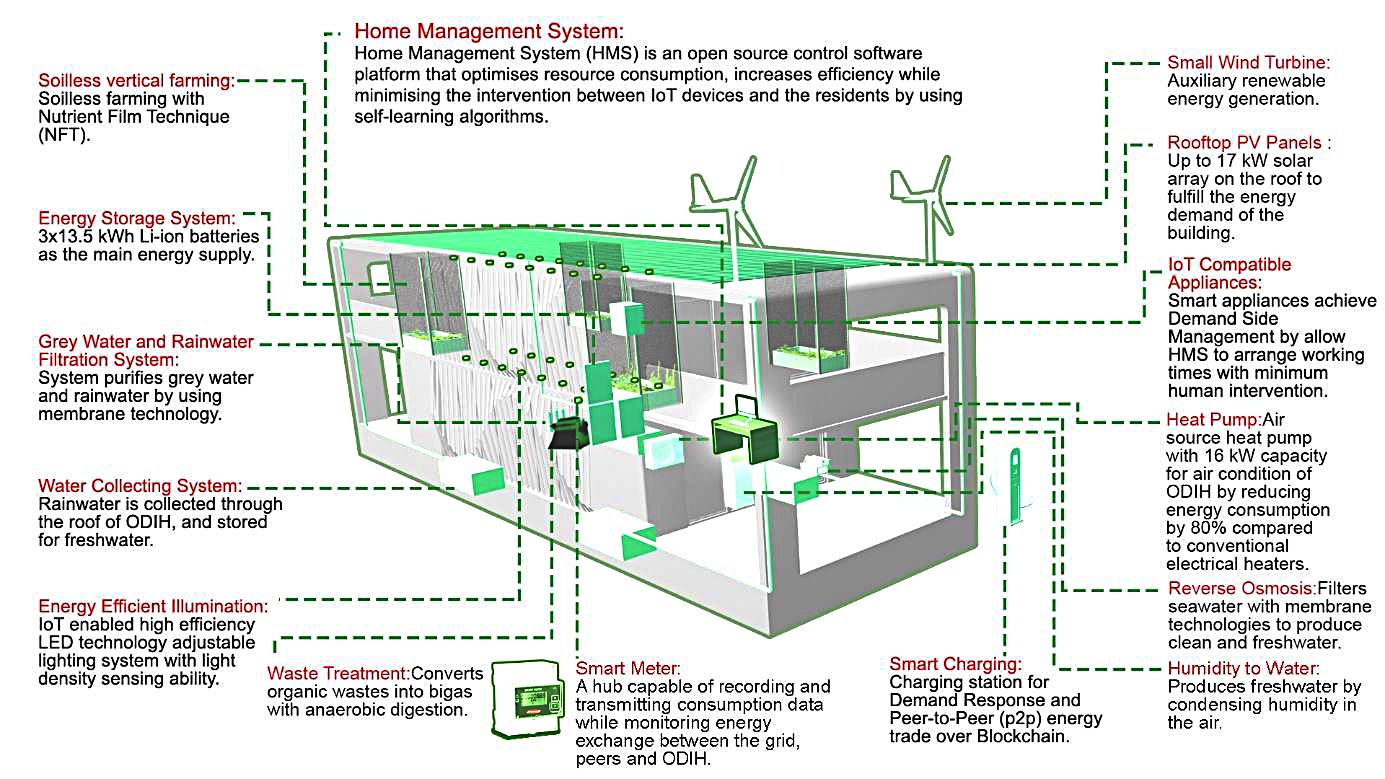
What should the home of the future look like? How should it work to enhance the lives of those living there and minimise its and its occupants’ impact on the planet?
Cambridge Centre for Smart Infrastructure and Construction (CSIC) research associate Dr Sinan Küfeoglu has written a book, The Home of the Future: Digitalisation and Resource Management, that addresses these questions. Here he gives a taste of the ideas featured in the book.
We dream of a ‘home of the future’ that will be a dwelling and a workplace for two persons. This home should use digital technologies to optimise its resource consumption as well as vital resource production.
We envisage a home capable of producing energy, water and food and an open office that will host start-ups and entrepreneurs to test and monitor their ideas and solutions in real life. The objective of this book is to investigate the self-sustaining concept under the water-energy-food nexus perspective.
To put the theory into practice, we will design a self-sustaining house that will serve as an Open Digital Innovation Hub (ODIH) for entrepreneurs, start-ups and researchers. ODIH will be a floating platform over water that provides residence for two persons and is able to produce its own water, energy and food.
When 17 Sustainable Development Goals of the United Nations are examined, we see that 11 of them are related to the ODIH project. These goals and their relationship with ODIH are:
Goal 1 – No Poverty: We introduce the self-sustaining concept to produce enough water, energy and food for two adults over a year. We anticipate that the self-sustaining idea will reduce poverty for households.
Goal 2 – Zero Hunger: The smart agriculture phase aims to provide a certain amount of food products annually. Each household will have its own food supply.
Goal 3 – Good Health and Well-being: The home management system (HMS) will incorporate health applications thanks to its open-source software and suitable hardware (sensors and IoT devices) of the ODIH. This way the residents’ health condition will be monitored regularly.
Goal 6 – Clean Water and Sanitation: Clean water will be supplied through reverse osmosis (seawater) and humidity-to-water systems. We will also harvest rainwater and purify domestic wastewater to be used in cleaning and soilless agriculture.
Goal 7 – Affordable and Clean Energy: The ODIH generates its own energy, primarily from rooftop solar power systems. Auxiliary renewable energy supply will come from wind and biomass.
Goal 9 – Industry, Innovation and Infrastructure: By harnessing digital technologies and building an open-source HMS, our aim is to foster innovation in smart cities. New digital solutions will be easily integrated and tested in the ODIH.
Goal 11 – Sustainable Cities and Communities: The ODIH is designed to be the core of smart cities of the future. By being genuinely self-sustaining and employing digital connection to the outer world, similar units will be easily connected to each other to form new sustainable communities.
Goal 12 – Responsible Consumption and Production: The HMS will monitor and reduce resource consumption within the ODIH. Furthermore, liquid waste will be completely recycled, whereas solid waste will be recycled to a certain extent.
Goal 13 – Climate Action: By consuming 100% renewable energy over a year, the ODIH will prevent 10 tonnes of CO2 emissions per year, preventing roughly 425 trees from being cut down annually.
Goal 14 – Life Below Water: The ODIH is designed to be a floating platform. Similar floating objects such as ships and boats dump their liquid waste into the sea, thus contaminating the ecosystem and harming the life below water. The ODIH recycles its liquid waste and therefore protects life below the water by not polluting the ocean.
Goal 15 – Life on Land: Increasing human population on earth will bring an increased demand for food and, therefore, farmlands. Deforestation for farming is a significant concern for life on land. The ODIH promotes soilless agriculture by using the nutrient film technique. We aim to reduce land use for agriculture, thus protect life on land.
The Home of the Future: Digitalisation and Resource Management (ISBN: 978-3-030-75093-0) is published by Springer. Copies can be ordered here: https://link.springer.com/book/10.1007/978-3-030-75093-0#about
Dr Küfeoglu will also present his ideas at a CSIC research talk on 9 September at 1pm. To register, send an email to [email protected].














